
What’s on in York: Christmas holiday sports and activities at Energise


A new council report says that the City will have to invest between £1.1 and £2.3 billion to become “Carbon Neutral” by 2030.
It is the first time that a figure has been put on the ambition to reach net zero carbon within 10 years.
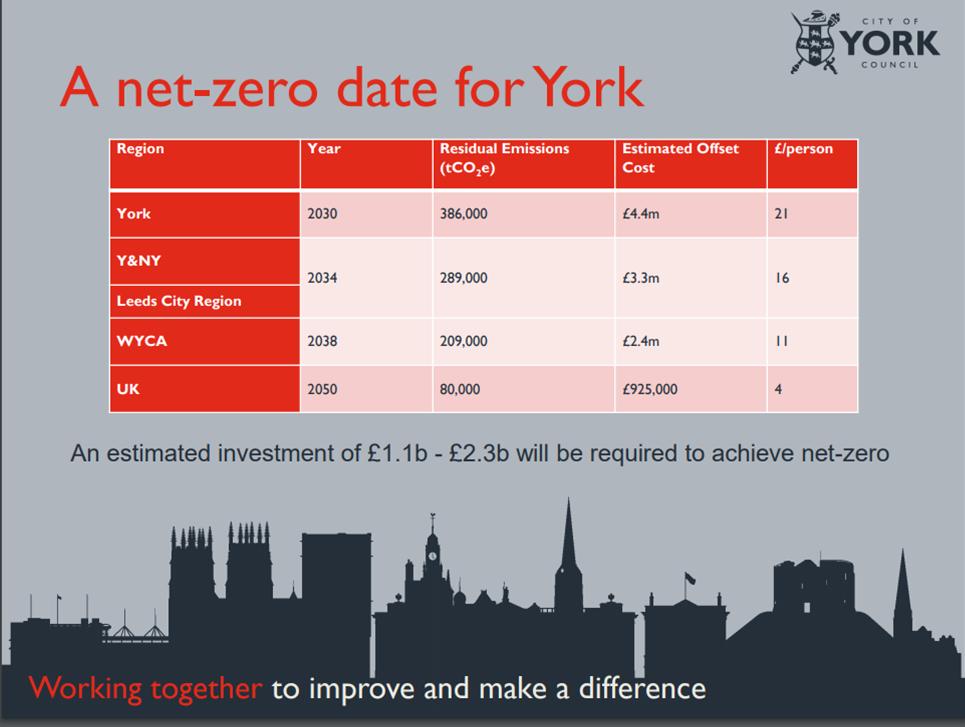
A meeting next week will also consider an academic report into climate change issues in the City.
The report claims
“that York could close the gap between its projected emissions in 2030 and net zero emissions by 47% purely through the adoption of cost-effective options in houses, public and commercial buildings, transport and industry”.
“The most carbon effective options for the city to deliver these carbon cuts include improved deep retrofitting of heating, lighting and insulation in houses, cooling and insulation in offices, shops and restaurants, and a range of measures across the transport sector including mode shift to non-motorised transport and the wider up-take of electric vehicles”.
The report accepts that these initiative alone would not be sufficient to achieve the target with another 31% reduction needed from “more innovative interventions”.
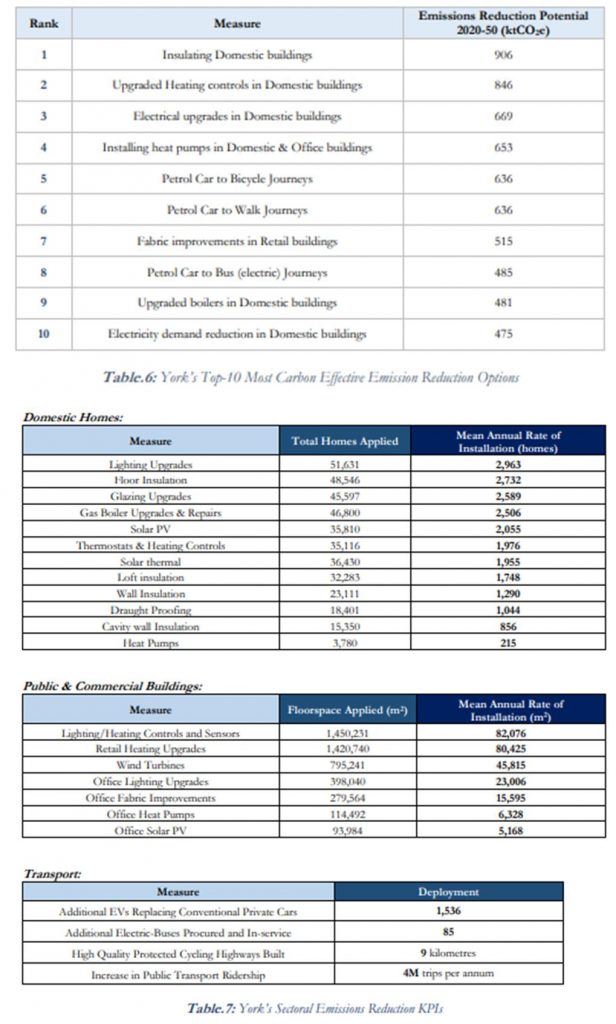
The report is likely to be met with some scepticism. The recent lockdowns have told us more about what is possible and what is likely to happen.
On the positive side, more people are working from home eliminating one source of transport emissions. Air quality in the City is now better than has previously been recorded in modern times.
The numbers of electric vehicles being purchased is also increasing.
On the negative side, there has actually been a drop in the number of people cycling and using public transport. The drop in the use of latter has been dramatic and it remains to be seen how quickly confidence in using buses will return.
The Council proposes to appoint – a slightly pretentiously labelled – Climate Commission.
How a climate change works programme could be funded – given the already spiralling level of debt at both City and national level – remains to be seen.
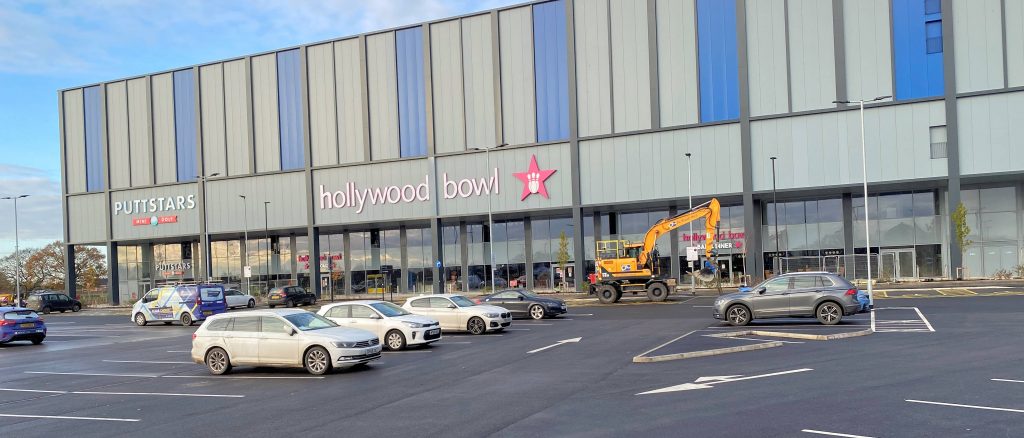
The York Council is set to admit that a deal to underwrite the construction of 3 restaurant units at the York Community Stadium, branded in 2017 as “highly risky”, has flopped.
A meeting next week will be told that the Authority must either lease the empty units itself or face an increase of £1.375 million in its contribution to the Community Stadium budget
The news comes one week after the authority was forced to admit that another restaurant, which it constructed as part of the Guildhall renovation project, will also remain empty. That restaurant was supposed to provide £150,000 a year in rental income which would have been used to offset the costs of the Council’s new Guildhall “business centre”.
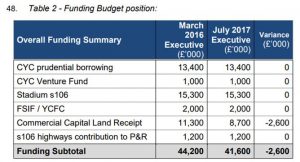
The Council agreed in October 2017 to accept liability if the developers were unable to lease the Community Stadium restaurant units.
Now with “practical completion” only apparently a few weeks away, and the units still not leased, the Council must decide whether to reduce the sale price for the commercial block or to lease the units itself for 25 years.
Another option, offered by land investment company L&G, would be for the Council to, effectively, buy out their interest in the units.
A Council report says, “Accepting a lease of these 3 units would also enable the Council to facilitate subletting’s for the units to a wider market as the Council could review offers from local and smaller businesses that would not be considered under L&G’s corporate benchmark although subletting’s are subject to L&G’s approval”.
Maybe so.
But the hospitality industry has changed beyond recognition recently. Even before COVID struck, two of the adjacent existing restaurant units (not owned by the Council) had become empty.

It is likely to be some years before Monks Cross becomes a destination location with a high footfall.
The Council could also find itself competing against itself to let restaurant units at both Monks Cross and the Guildhall
The Council has not published a business plan which would guide its next set of decisions.
There should be no more ill considered adventures using taxpayers money.
The City already faces cuts to basic public service standards as a result of COVID. Taxpayers should not be expected to subsidise empty floorspace.
Lessons must be learned for the future.
Deaths and test results
There has been a big jump in the number of COVID deaths announced today. EIGHT new fatalities have been announced by the York Hospital Trust. Two occurred yesterday, four on Tuesday and two on Monday.
The cumulative total second wave death toll at the York and Scarborough hospitals has now reached 74
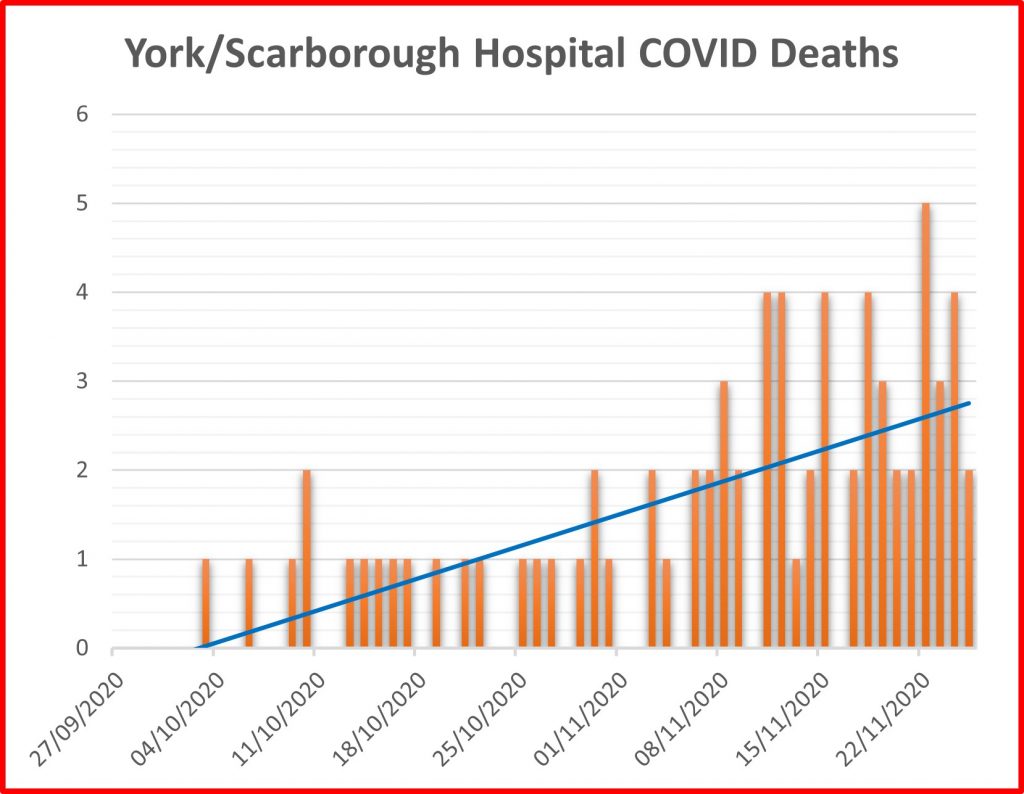
TWENTY NINE (29) additional positive test results announced today. Brings cumulative total to 5576
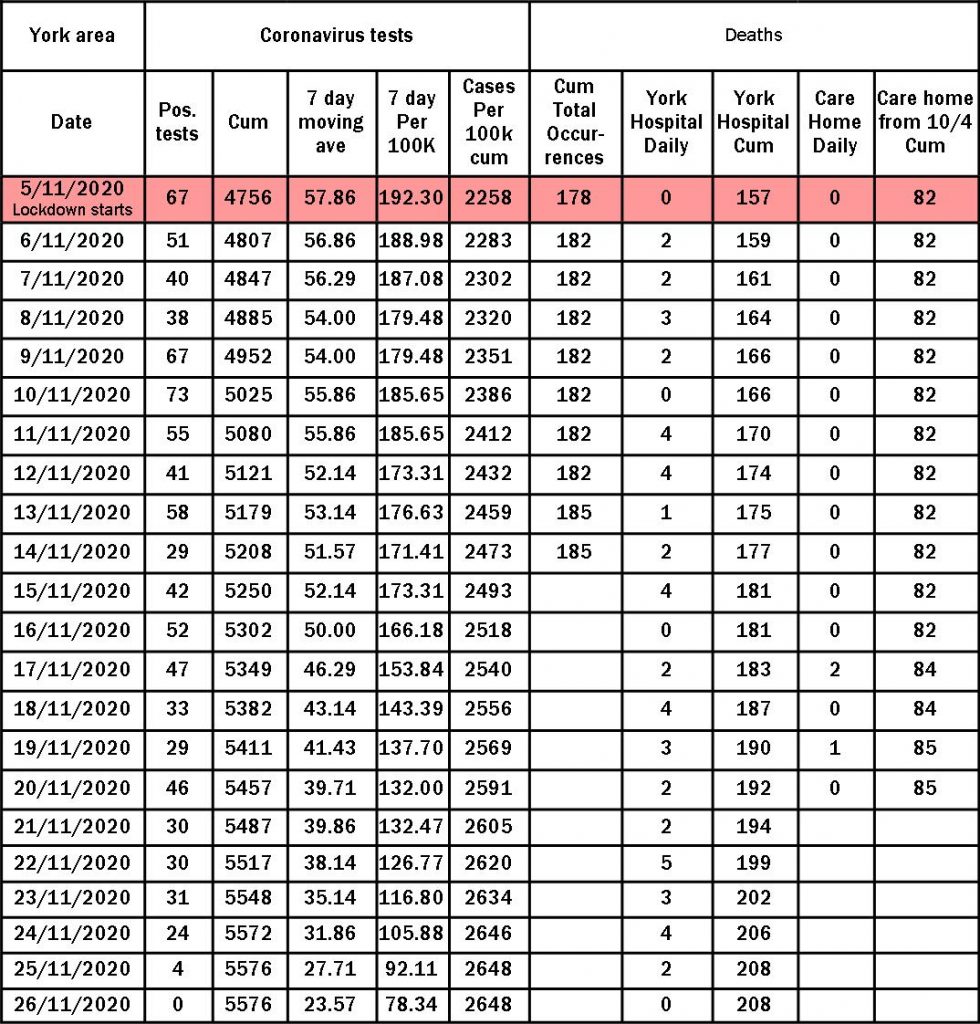
It appears that the threshold used by the government, to determine whether an area could be given a Tier 1 classification, was that the location must have fewer than 100 cases per 100,000 head of population. Very few areas met this criteria (Cornwall, Isle of Wight).
On the last validated numbers (21st Nov) York had 132.47 cases per 100k population.
On the present downward trajectory, York would pass below 100 cases threshold before the next review date. This is expected to be 10th December with any changes in classification effective from 16th December.
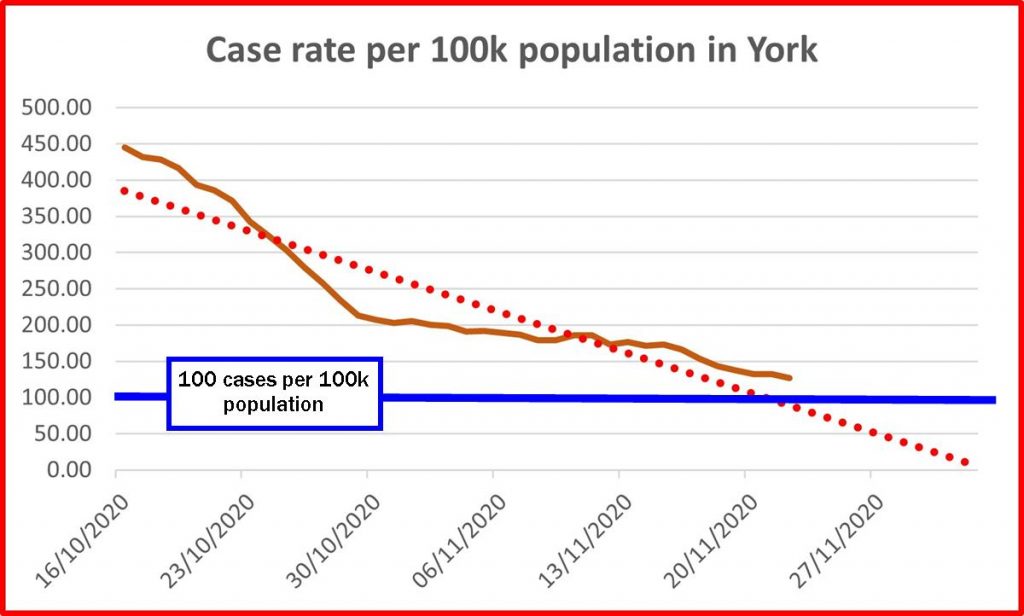
During the week ending 19th November, 3530 P2 tests were carried out in York. Of these, 8.6% proved to be positive.
This was a lower positivity rate than was seen during the previous week
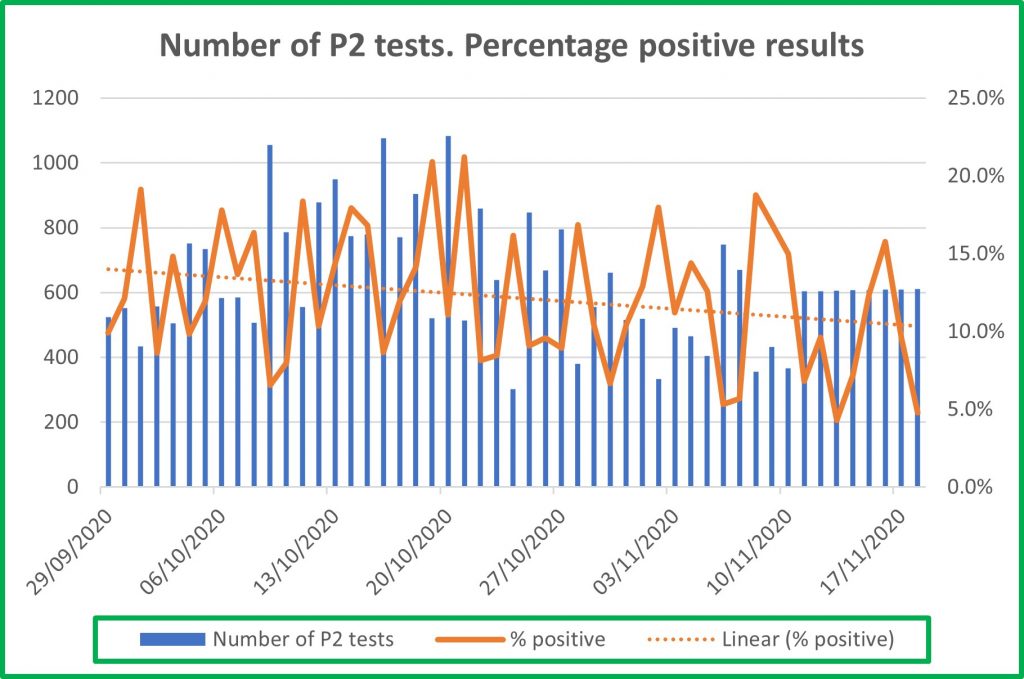
Neighbourhood data has now been published. There is little change from yesterday.
We have reordered the table to reflect the cases per 100k of population rate.
This is one of the the figures that the government used to determine which Tier an area was allocated into.
Essentially the City needs to have a rate below 100 to be considered for Tier1 by 10th December.
Two neighbourhoods. Heslington and Clifton Without, are well above this rate at present.
The colour coding now reflects the central government’s presentation key
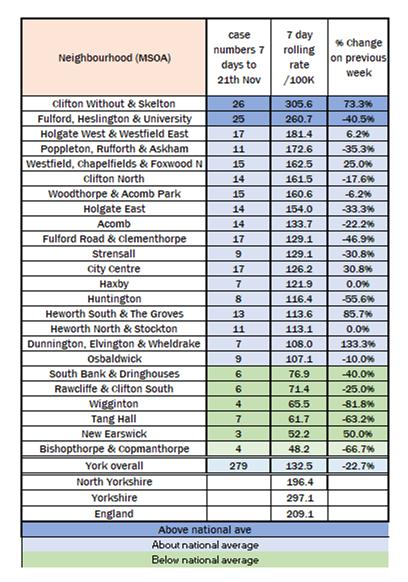
Tier 2 for York
York has been placed back into Tier 2 restrictions by the government. The new arrangements start on Tuesday.
The main impact is on pubs which will have to serve meals if they are to open while households will not be able to mix indoors.
All shops, hairdressers etc will still reopen from Tuesday.
The situation will be reviewed after a fortnight and may be changed again before Christmas
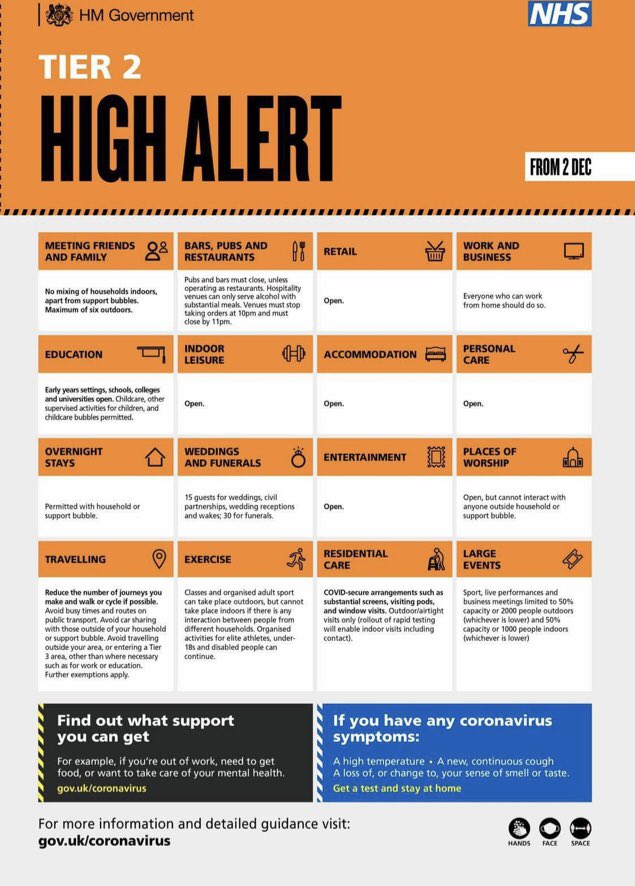
Outdoor events will be limited to 2000 spectators.
This will affect York City FC who were hoping to move into the new Community Stadium at Monks Cross.
However work at the stadium is still underway today with no sign of completion in sight. The Club may look to reopen Bootham Crescent. Social distancing at an all seater stadium would be easier to manage.
An update from the York Council on the stadium situation is long overdue.
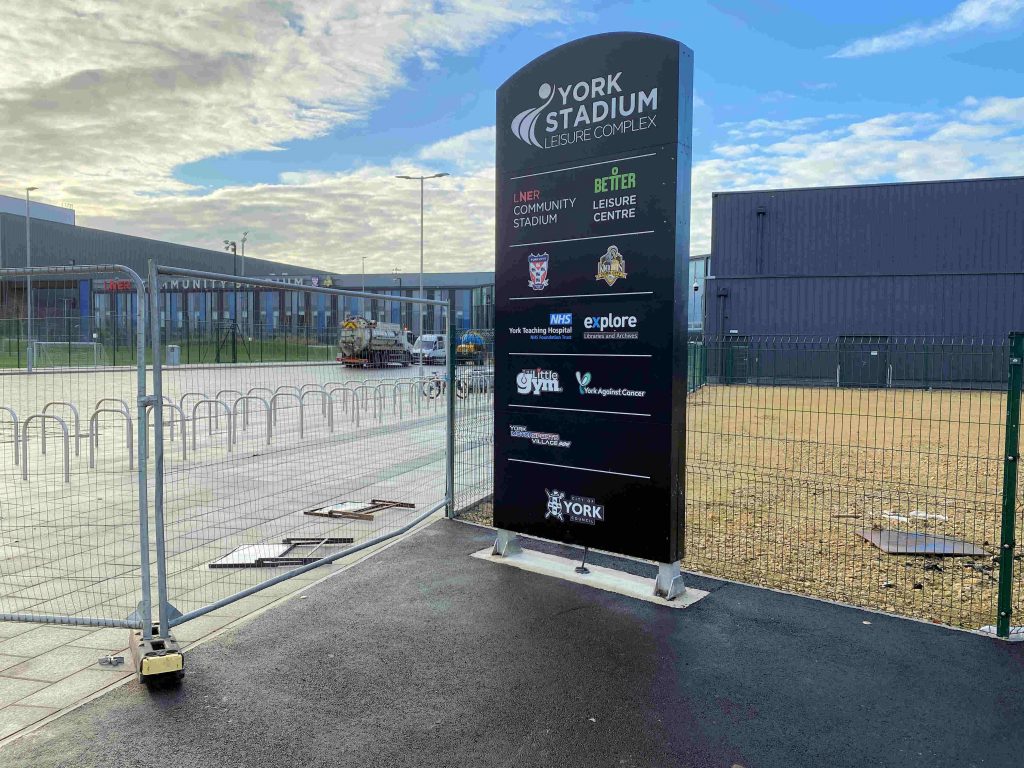


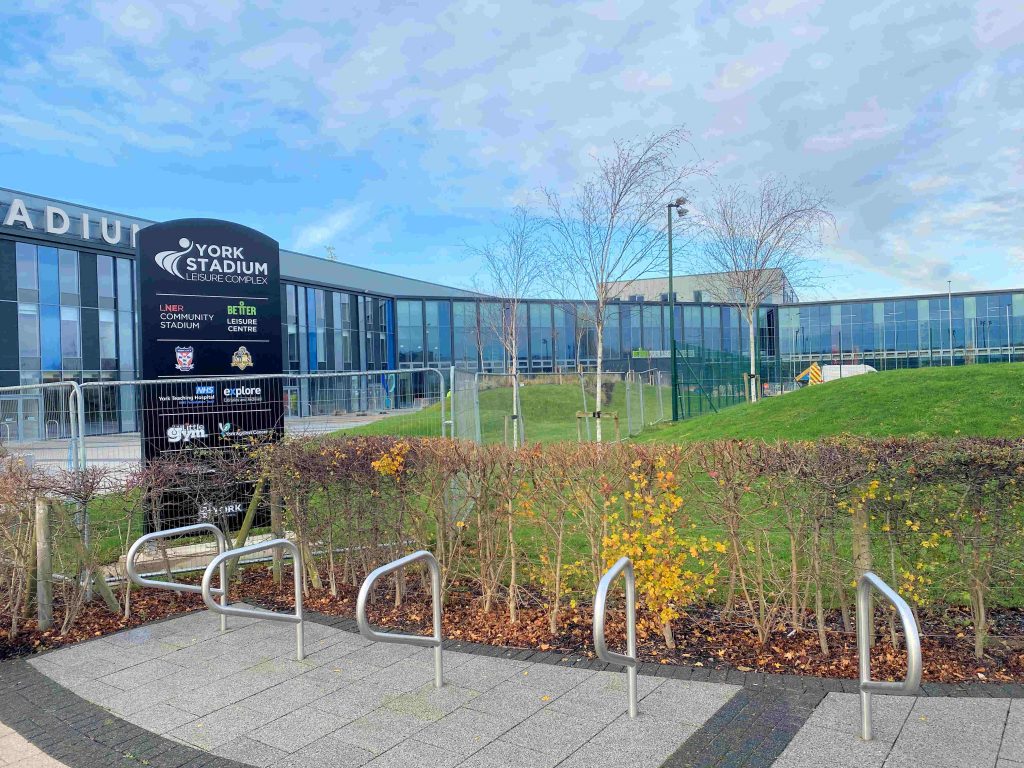
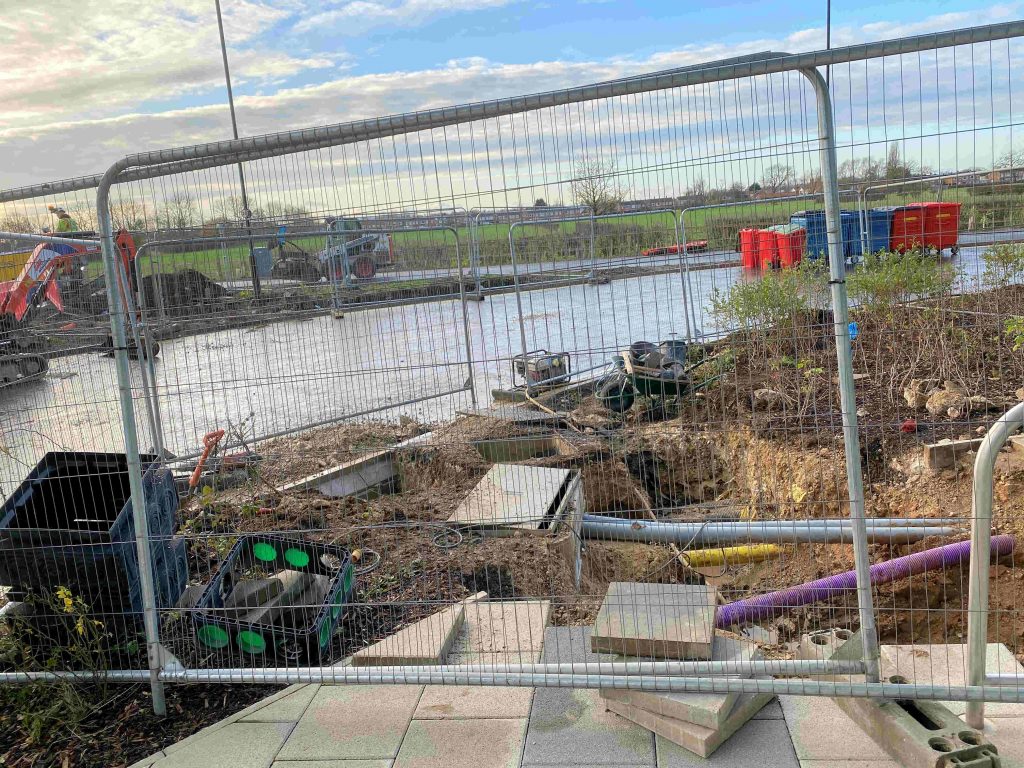
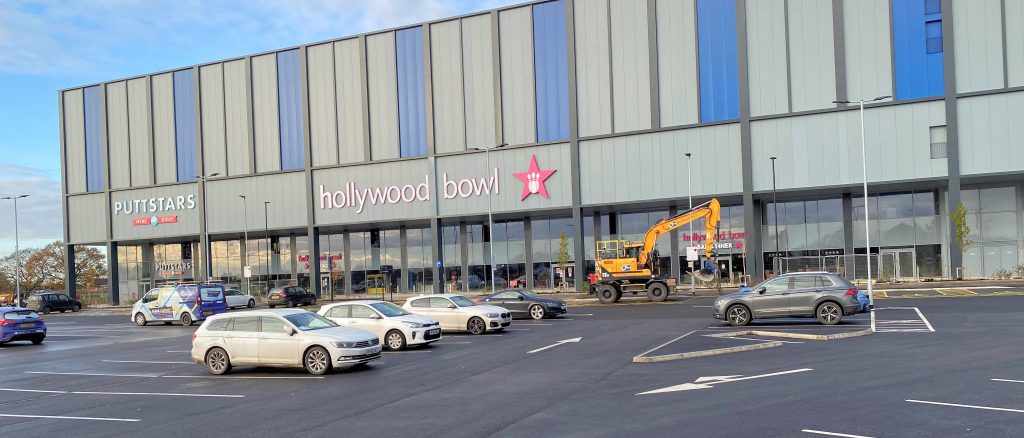
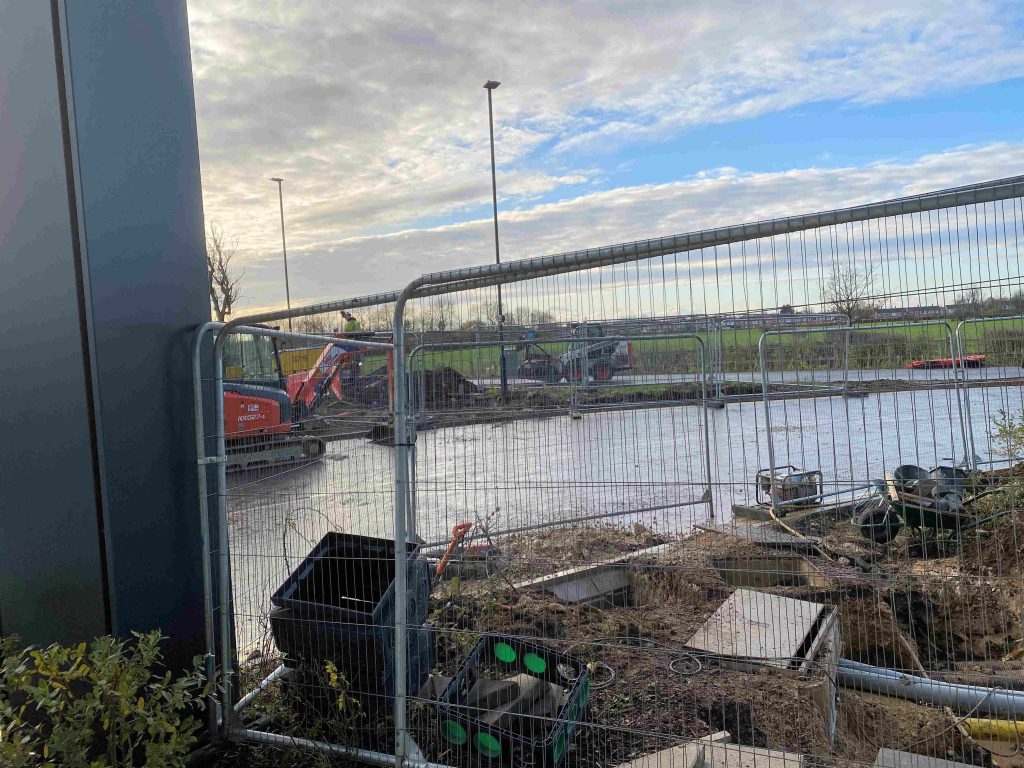
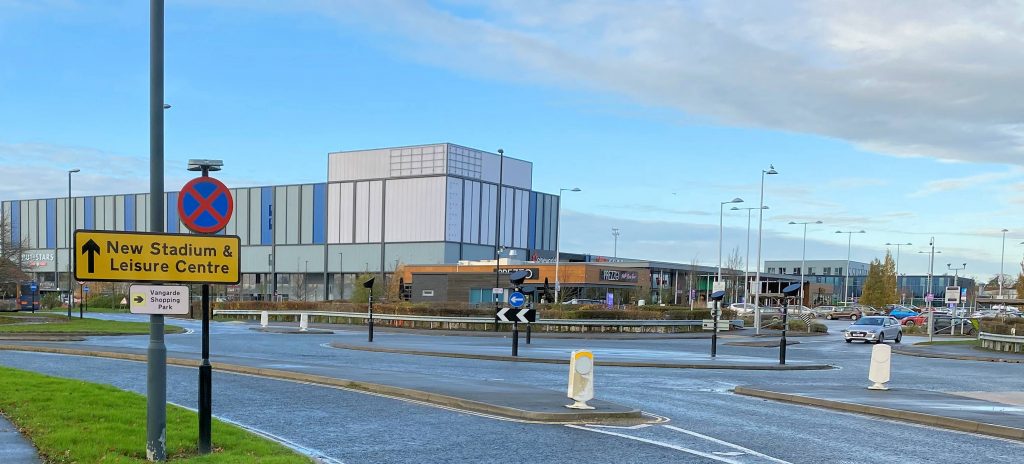
It looks like high case rates in Scarborough may have contributed to York being placed in Tier 2 restrictions. There may be concerns about capacity at the York Hospital Trust which is also responsible for care in Scarborough. More details are available by clicking here
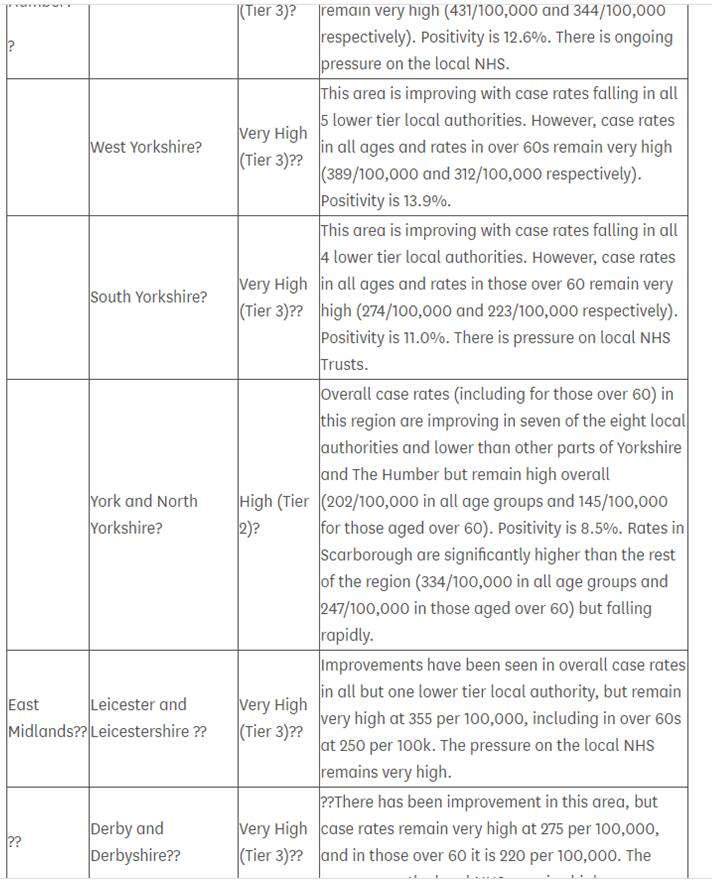
West and South Yorkshire have been placed into the highest TIER 3 category. This includes additional restrictions on travel to, and from, the areas.


COVID Winter Grant Scheme for the needy
The York Council will consider next week how it is to allocate the, government funded, Winter Grant scheme.
On Sunday 8 November 2020, the government announced a package of extra targeted financial support for those in need over the winter period. The COVID Winter Grant Scheme will see new funding issued to councils to support those most in need with the cost of food, energy and water bills and other associated costs.
The Department for Work and Pensions (DWP) will provide funding to the council, who will administer the scheme and provide direct assistance to vulnerable households and families with children particularly affected by the pandemic.
This will include some families who normally have access to Free School Meals (FSM) during term time.
The funding allocation for York is £416,729.
Around £200,000 of the fund is set to be used to provide meals for needy children during the Christmas and Easter school holidays (i.e. those who would normally quality for Free School Meals)
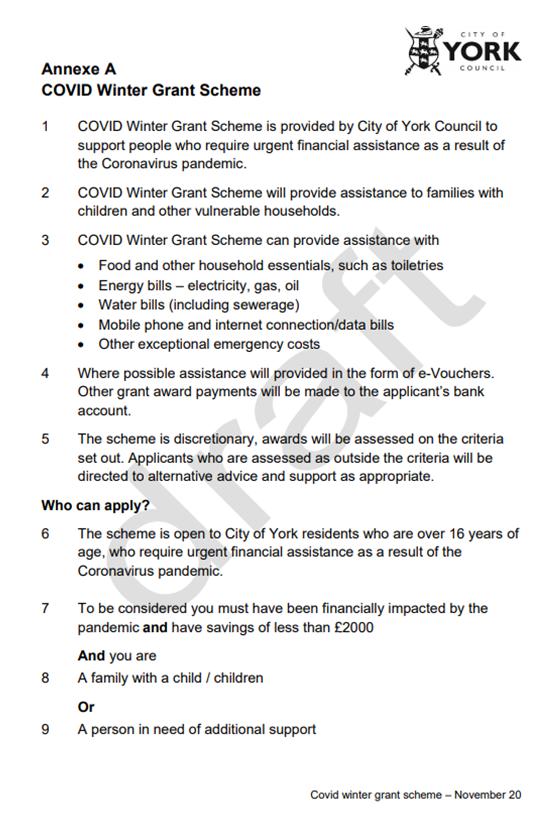
There are already many local schemes operating which provide support to local people hit by te pandemic. These include surplus food giveaways
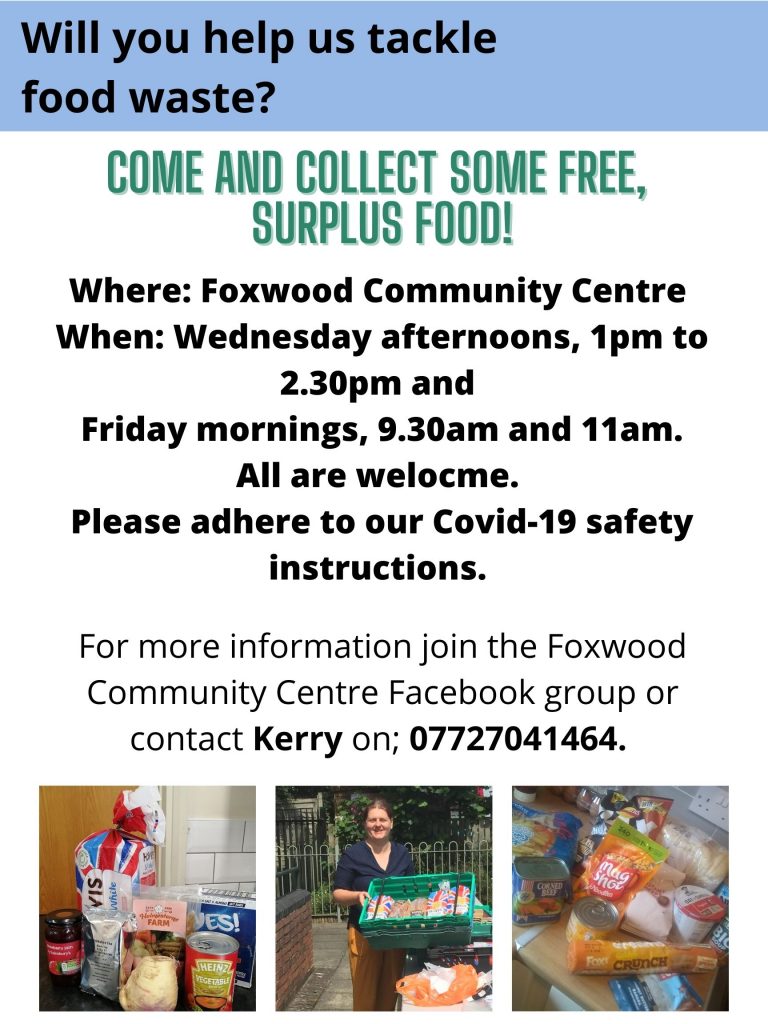

It looks like the York Council will pay the beleaguered “Welcome to Yorkshire” (WTY) tourism body over £55,000.
The controversy wracked regional body has lost a lot of subscriber income recently as a result of the impact of the pandemic.
Following a scandal about profligate spending, the organisation reformed last year and took on a Wakefield Labour politician as its chairman.
Ironically the Wakefield Council, along with Hull, is now refusing to pick up its share of the rescue package.
The reason for some scepticism is clear.
York businesses benefit from marketing campaigns aimed at getting more tourists to visit the region. The City is an obvious first port of call for foreign visitors in normal times.
The visitor economy will need help to get back on its feet over the next year or two. Visit York (part of Make it York) leads for the City on tourist promotion. Relations in the past with WTY have been strained with little evidence of coordination.
Improvements are planned and a Service Level Agreement has been published (click).
What the SLA lacks are measurable outcomes at street, shop, bar, attraction and bed occupancy level. This deficiency is shared in the rather woolly documentation which guides the Council’s, similarly uneasy, relationship with Make it York.
Make it York are expected to make a bid for additional funding at a Council executive meeting in December
WTY should cut back on its sponsorship activities. Tagging horse race meetings, cycle races, garden exhibitions, award dinners etc may be OK in good economic times, but not today.
It should focus on its core advertising programme and let local tourist bodies take the lead in attraction planning.
The most successful organisations are locally rooted and driven by committed, experienced leaders.
In York organisations like the BID have proved what can be done with relatively modest resources and good communications.
WTY could learn from them.
More minor highways improvement schemes have been approved under the York Councils delegated ward budgets.
They are located in the Dringhouses, Fulford and Osbaldwick wards. A list can be viewed by clicking here
The process and method of prioritisation of the use of the £1 million available budget is obscure. No comprehensive list of the improvements approved and implemented in each part of the City has been published on the Councils web site. Requests for improvements to footpaths and roads in the Westfield area have produced little response.
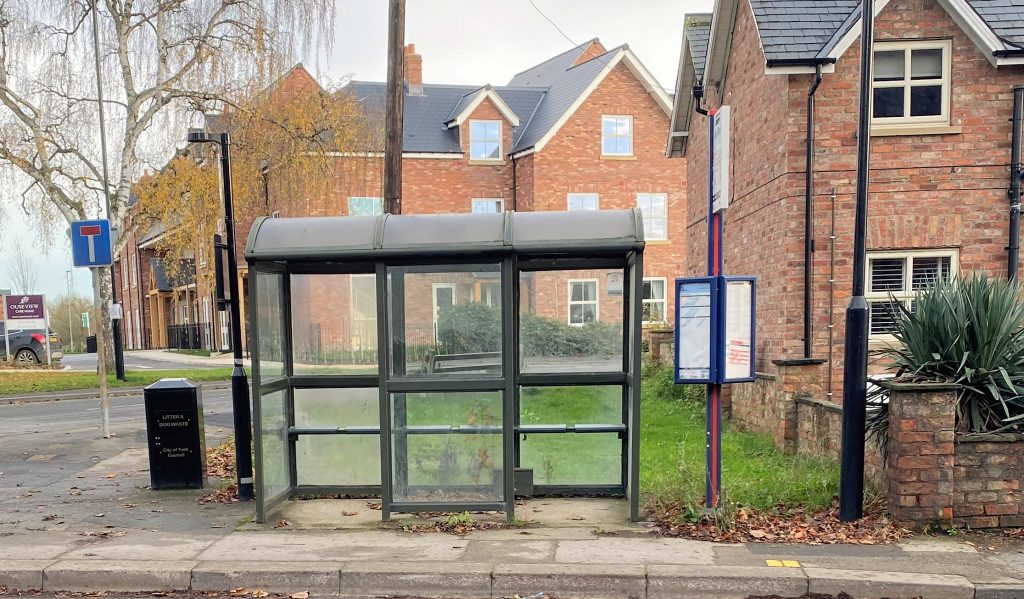
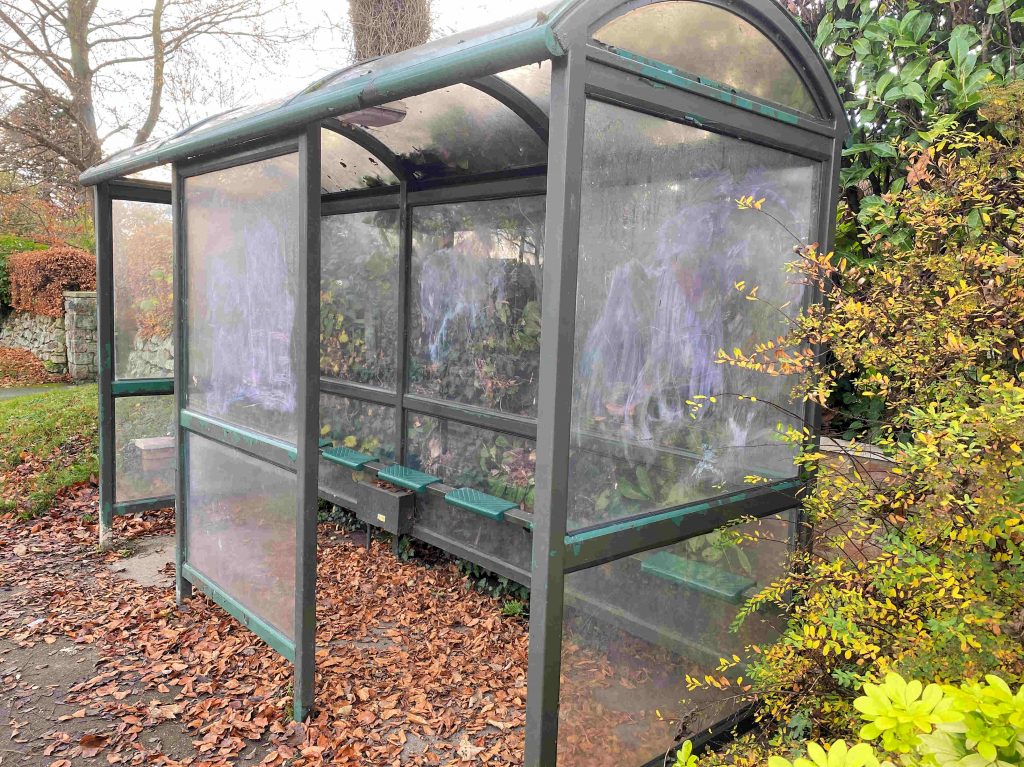
Even in Fulford, where funds are being allocated, some may wonder whether an investment in replacing opaque panels in local bus shelters might have deserved some consideration? Instead two prominent shelters look shabby or are overgrown by vegetation.
It is a similar picture on the west of the City.
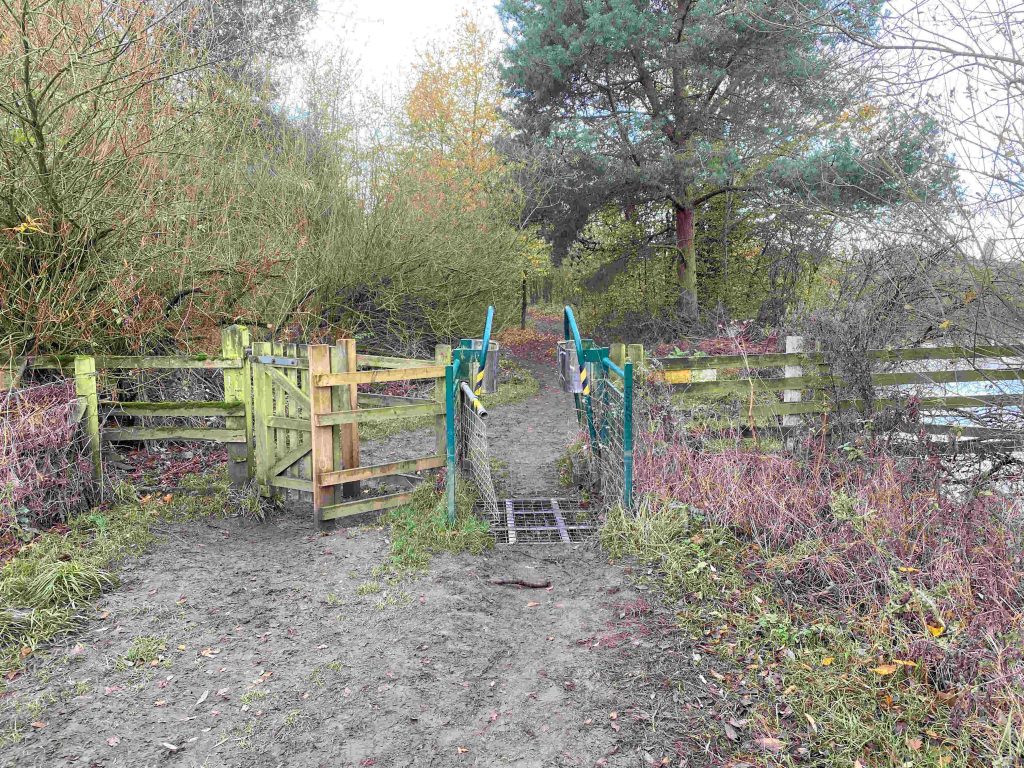
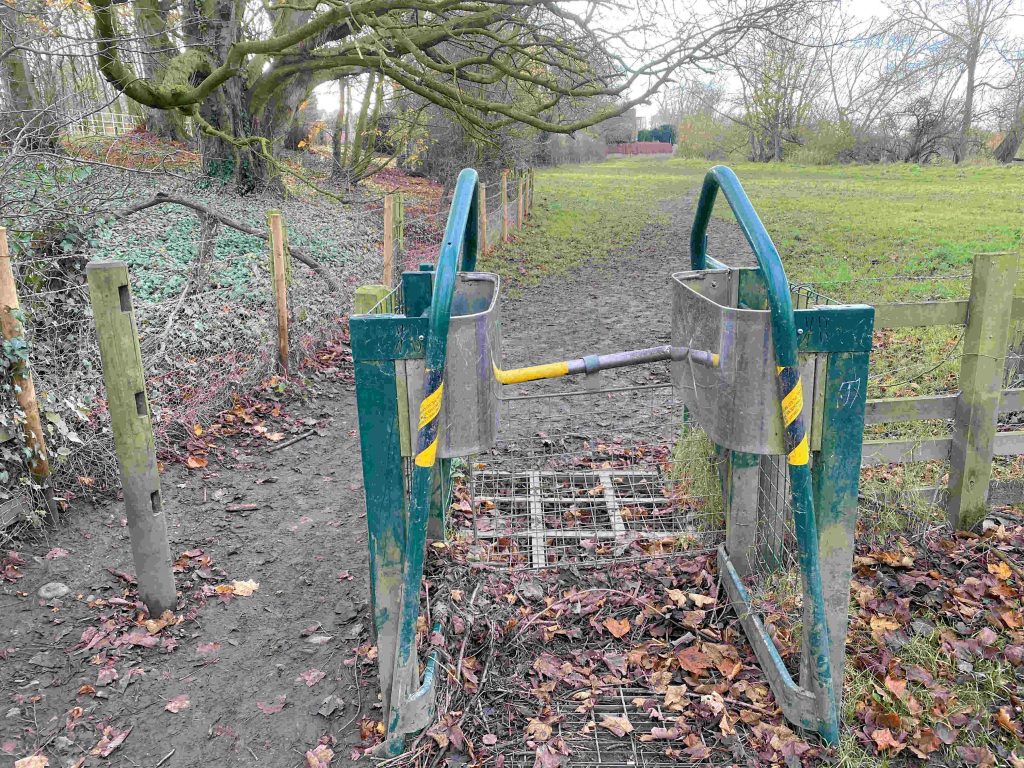
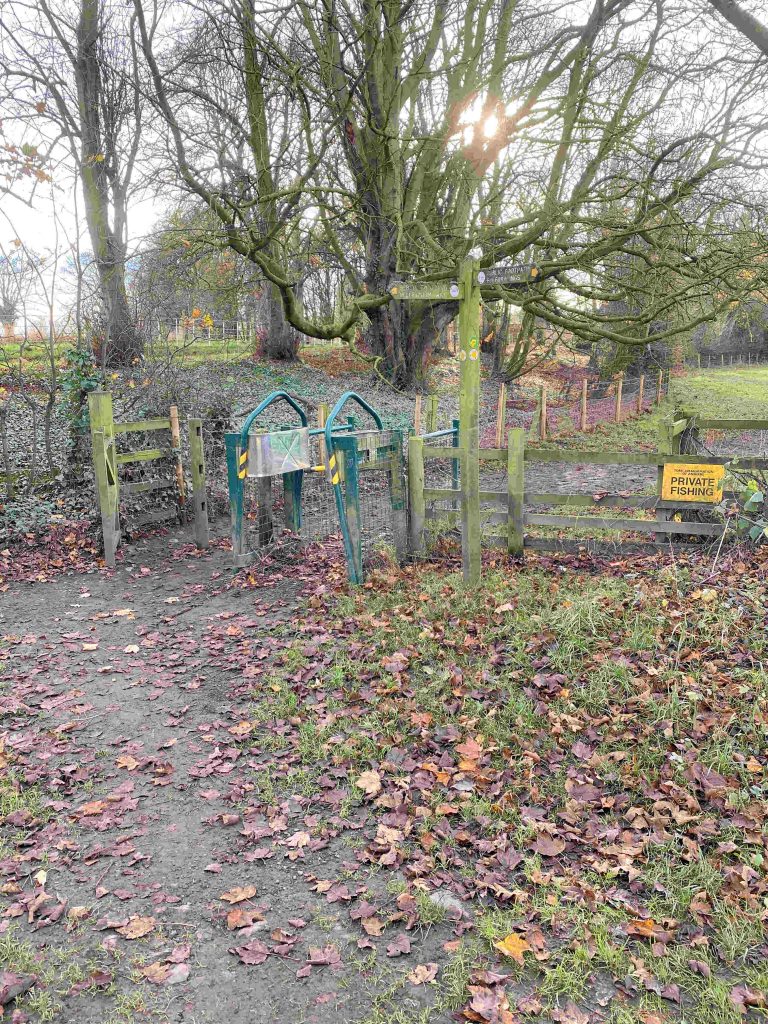
The delegation of funding decisions to local communities is a step in the right direction but currently allocation processes look to be a combination of patrimony and chance.
The decision of the York Councils planning committee to delay a decision, on a plan to replace the Castle Car park with a multi storey alternative at St Georges Field, throws into contrast the conflicting policies of the present Council.
The multi-story option emerged after nearly 2 years of public agonising. £2.2 million has already been spent on design work, consultants fees and consultation costs. The resulting plan didn’t suit everyone (including us) but it did present a way forward.
Multi storey car parks are usually ugly, there can be security issues, they concentrate vehicle movements onto limited sections of the road network and – in the case of the St Georges Field site – park visitors to far away from their ultimate destinations whether that be shops, work or hospitality outlets.
The Council had submitted its planning application despite already acknowledging that changes to the Castle car might have to wait until the, Coronavirus prompted recession, has eased.
No great problem.
The Castle car park has been there for decades and it is the parking location of first choice for many shoppers and visitors. In July and August this summer it was rammed full.
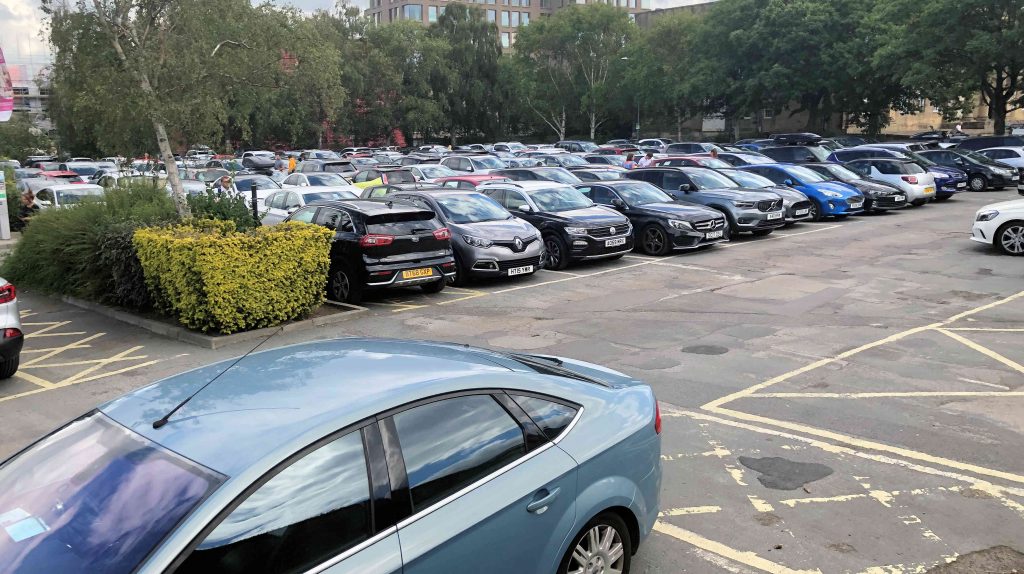
Now a Planning Committee has rejected the St Georges Field plan by 8 votes to 7. The key vote was cast by Cllr J Barker a hitherto low profile LibDem Councillor from Poppleton. The same meeting also deferred consideration of a new housing scheme on the former Castle Mills car park site.
That car park was lost to general use over a year ago and is still unavailable.
Like the odd decision last year, when Labour Councillors bounced the Council into pledging to stop through traffic from using Lendal Bridge, the impracticalities and contradictions in policy now threatened the economic recovery of the City.
The Council has said it will spend £40,000 consulting on the future of car parking in the City centre. If it appoints consultants to undertake the exercise then they will come under pressure from sectional interest groups including the “folksy fringe” who really don’t want any city centre car parking provision at all.
Personal transport remains the preferred mode for getting around for many people. Post COVID, cycling levels have fallen and public transport use has collapsed.
Meanwhile the number of City centre shops going into administration is creeping upwards.
The beginning of the new year – traditionally a poor time of year for traders – may see even more businesses facing ruin.
Some consistency from the York Council is required to avoid an economic collapse
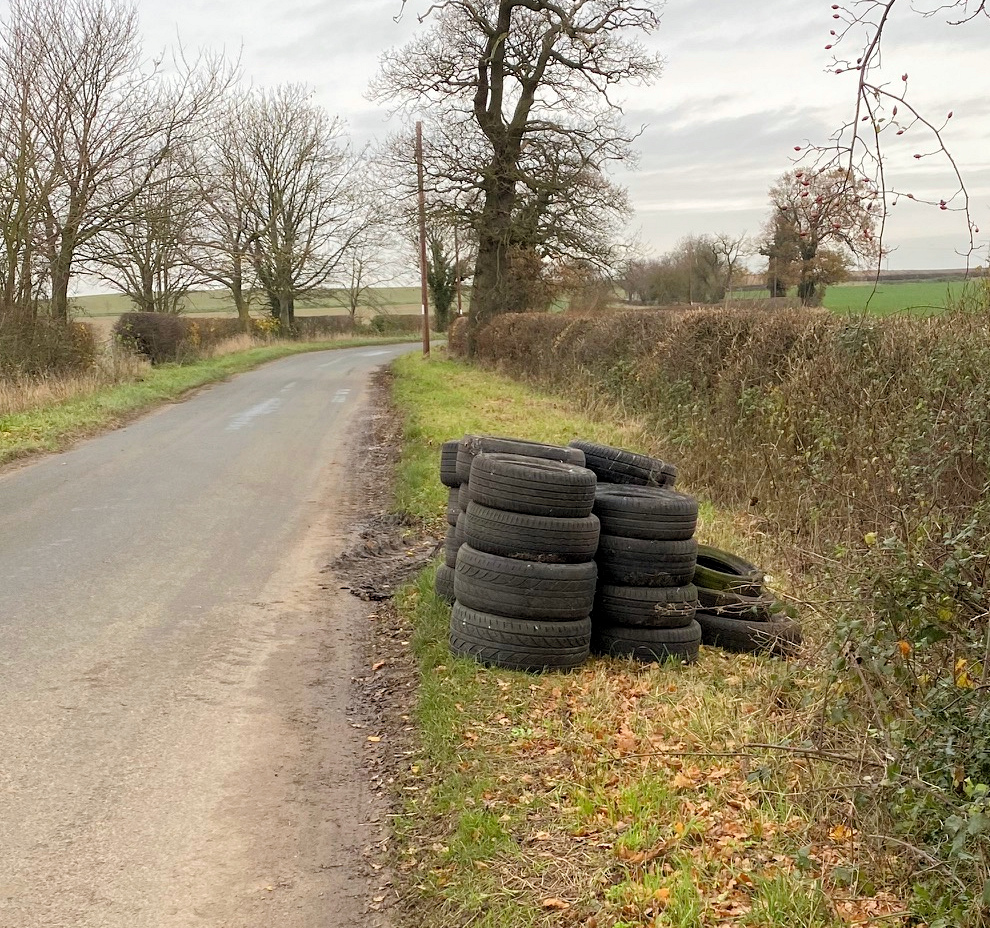
Deaths and test results
TWO more deaths at the York Hospital Trust were announced today. Both occurred on Tuesday. Brings the second wave fatality total at York and Scarborough hospitals to 49
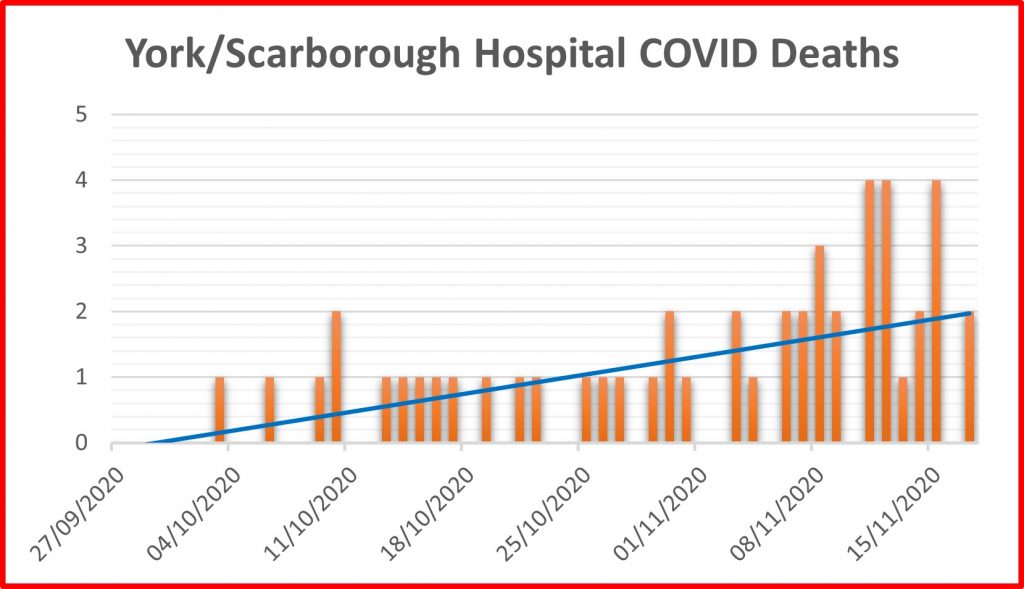
FIFTY FOUR (54) additional positive test results were announced today. Brings total to 5345
Trend is still very slowly downward
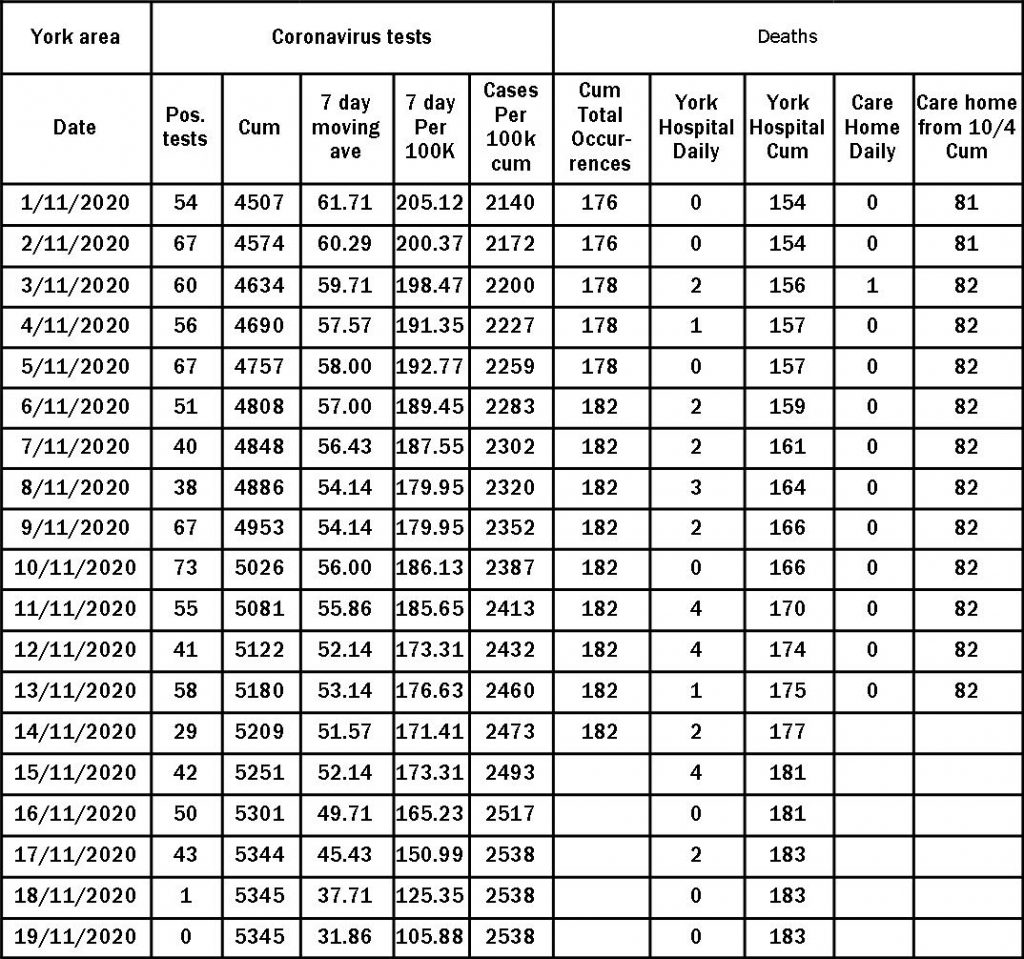
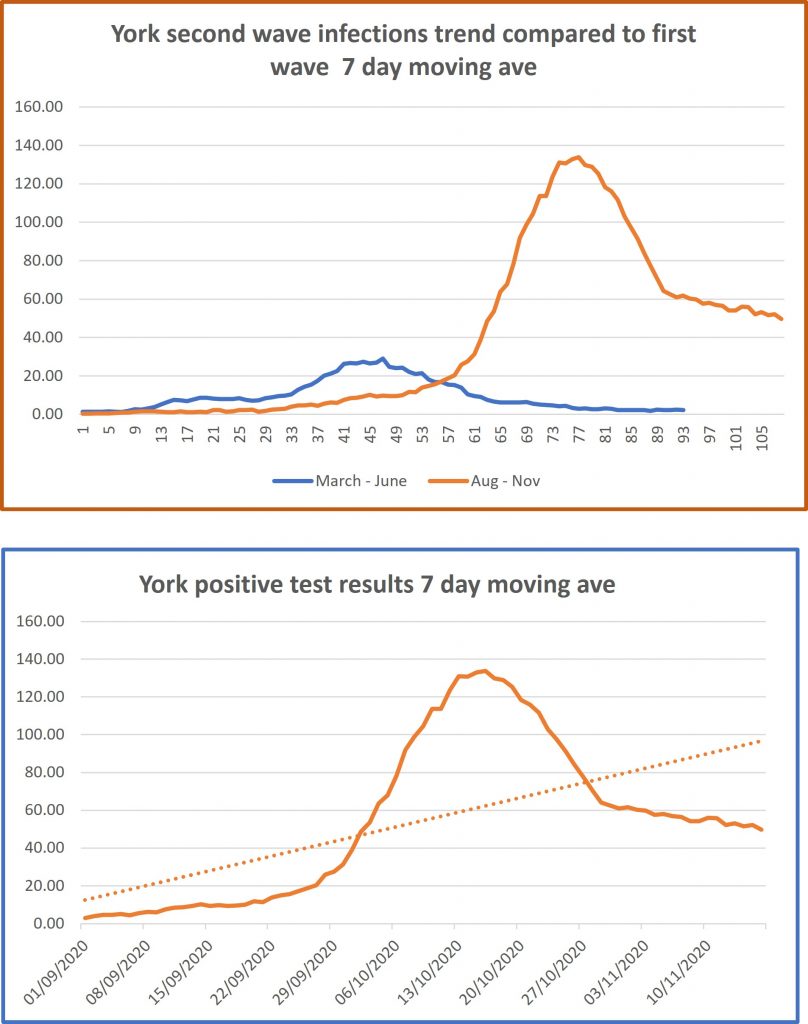
For the first time we have seen, during the 7 days ending on 14th November, a drop in case numbers at City, County, Regional and National level.
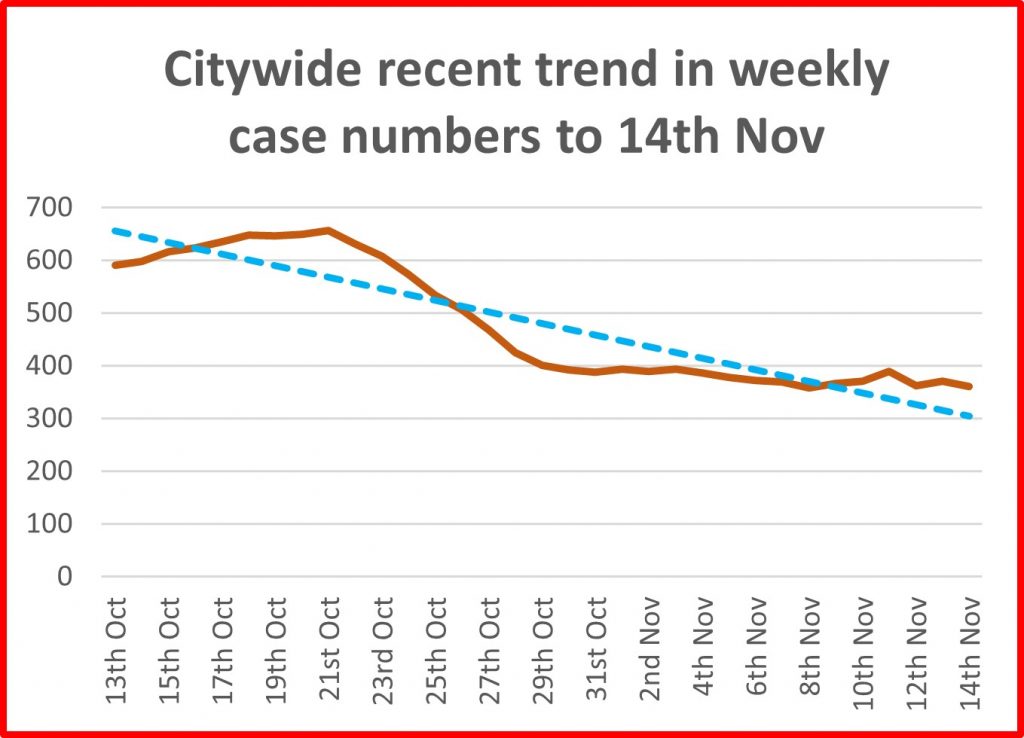
Only the Heslington neighbourhood in York is now above the County, Regional and National averages (cases per 100k population).
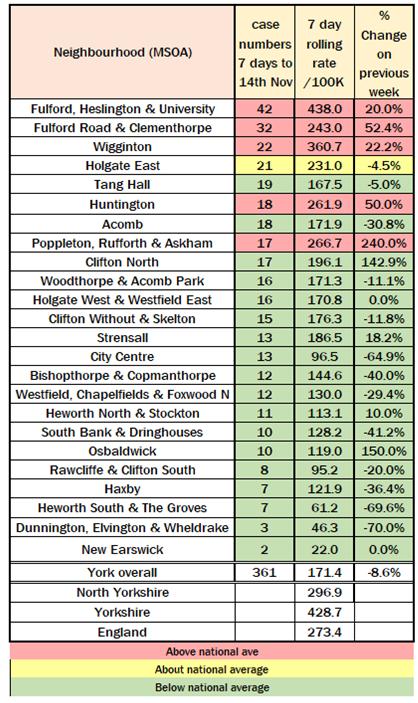
Some significant points from the graphs below
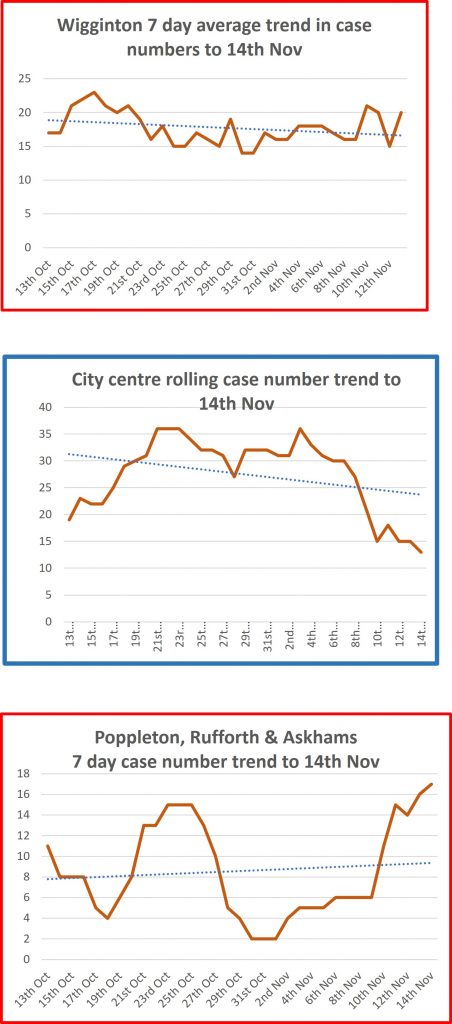
4049 (P2) coronavirus tests were carried out in York during the week ending 11th November. 11% of tests were positive. This didn’t vary significantly from the previous week
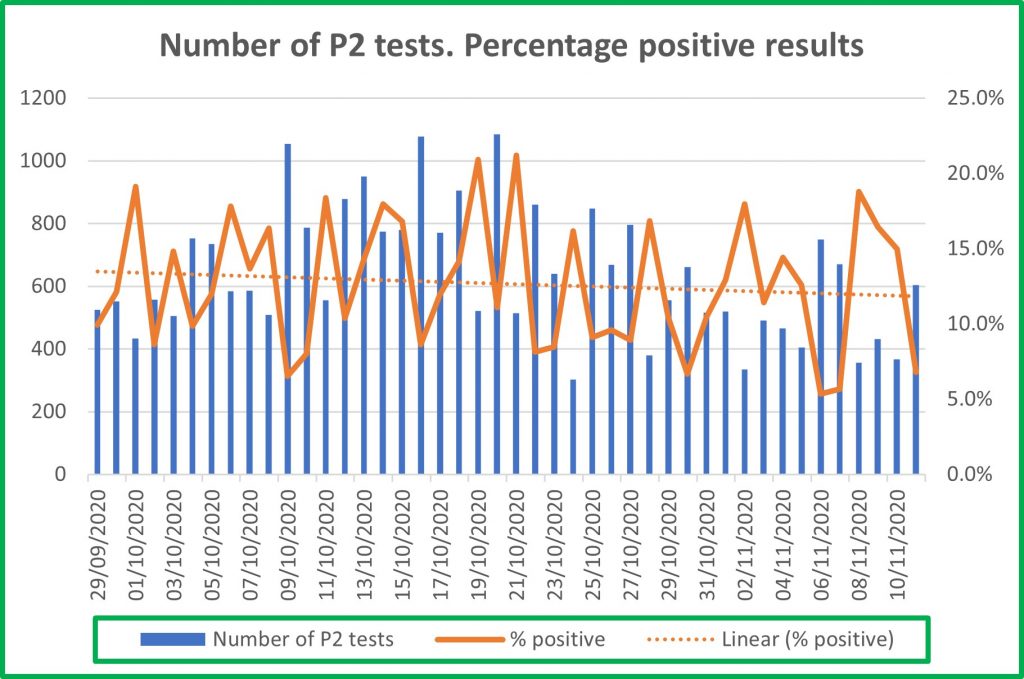
A report to a Council meeting next week offers a limited insight into the York Councils property dealings. It comes at an opportune time with various other Councils having been badly burnt recent by injudicious investments in land and property. Croydon and the Cambridgeshire County Council are both heading for the local government equivalent of bankruptcy.
Against that background taxpayers might would hope for York Councillors to now to adopt a more measured approach to investment. The commercial property market is likely – in the wake of the pandemic – to remain depressed for some time. It is not a good time to sell assets.
Instead we find a plan to borrow an additional £4 million on top of the £384 million already committed. That is a debt of nearly £2000 for every man, woman, and child in the City. 20% of tax payments will have to go towards paying interest charges.
So what is happening to these assets?
Oakhaven Elderly Persons Home.
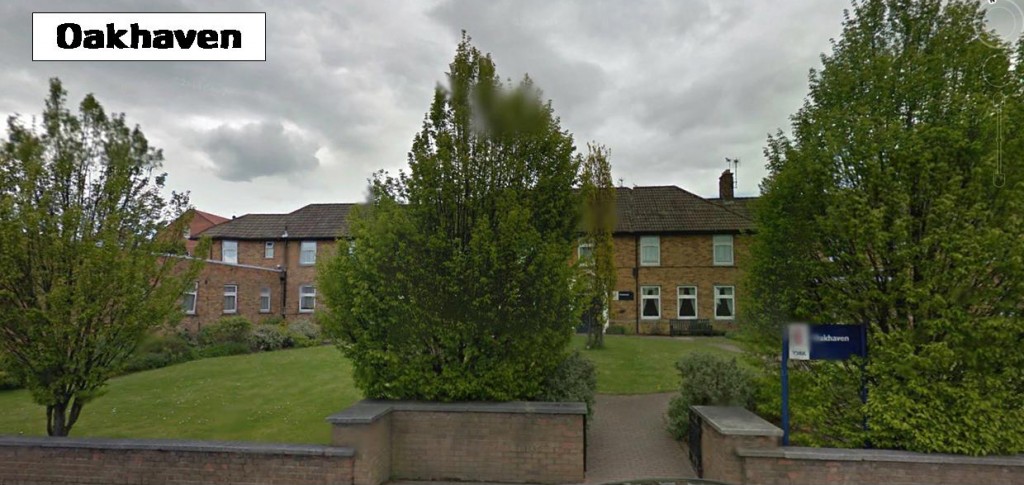
This has remained empty since occupants were moved out – prematurely as it turned out – in 2016. The sale for a new care home to Ashley House fell through in early 2017. No attempt was made to find even a temporary use for the site which occupies a prime location near to local amenities and good transport links. Maintenance expenditure on the empty building continued to fall on taxpayers. Now the council is proposing an “off-market” sale to regional care home operator, Burlington Care Limited. The size of the offer has not been revealed. Ironically, the officer report admits “An open market exercise may be impacted by COVID 19 suppressing property values. The council budget has been significantly impacted by COVID and there is a need to realise value from vacant assets in the near future”
Another former care home, which has been empty for nearly 5 years, is Willow House. It is on a prime site located next to the city walls. The site was nearly sold for student housing in 2017 but ran into planning difficulties. Other offers were ignored by the Council and an offer from a company which utilises empty residential accommodation to accommodate the homeless in return for caretaking and security duties, was spurned. Now it seems that the Council intends to build 40 apartments on the site and will probably use its own “Shape” development company to manage the investment. The site is worth more than £2.3 million.
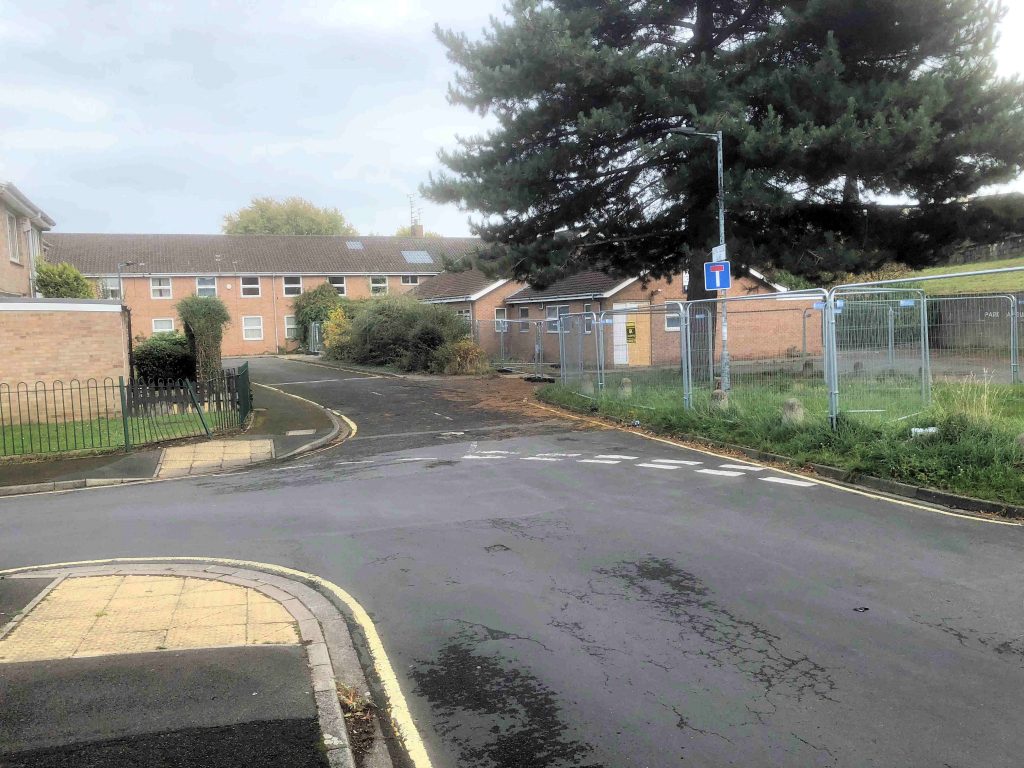
Morrell House
An elderly person’s home empty since early 2018. No use has been found for the site. It is to be considered for use by “self-builders” but if that is not successful it will be sold on the open market.
Moor Lane car park
This is the site currently in use as a flu vaccination centre. It has mostly been empty for the last 4 years. There has been a lot of developer interest in building on the site. The Council has decided not to include it in the Council house building programme and may therefore sell it on. On the open market – even in these depressed times – it is likely to be worth less per acre than the Willow House site.
The sale of this home to private care home operator “Yorkare” has stalled. COVID is blamed
Generally, taxpayers have benefited in the long run when the Council has bought land and buildings in the City. There have been exceptions. For example, when the authority impulsively sold the site now occupied by the Hiscox insurance company on Peasholme Green. Had it included a betterment clause in the sale then taxpayers rather than shareholders would have benefited from the subsequent increase in land values.
Knapton Forest
It looks increasingly likely that the purchase of good quality agricultural land near Knapton, with the intention of planting trees on it, may go into the same ill-considered category. When wooded, the area will not have a resale option but will involve an ongoing maintenance liability. 180 acres will support 50,000 broadleaf trees making a, carbon sequestration, contribution to the £1.2 trillion additional trees which would be required on the planet to reverse climate change! The £1 million project is also hailed as a major new passive leisure option for residents although, in truth, it is poorly positioned to make up for the open space lost in recent years to building operations in the City’s poorer areas.
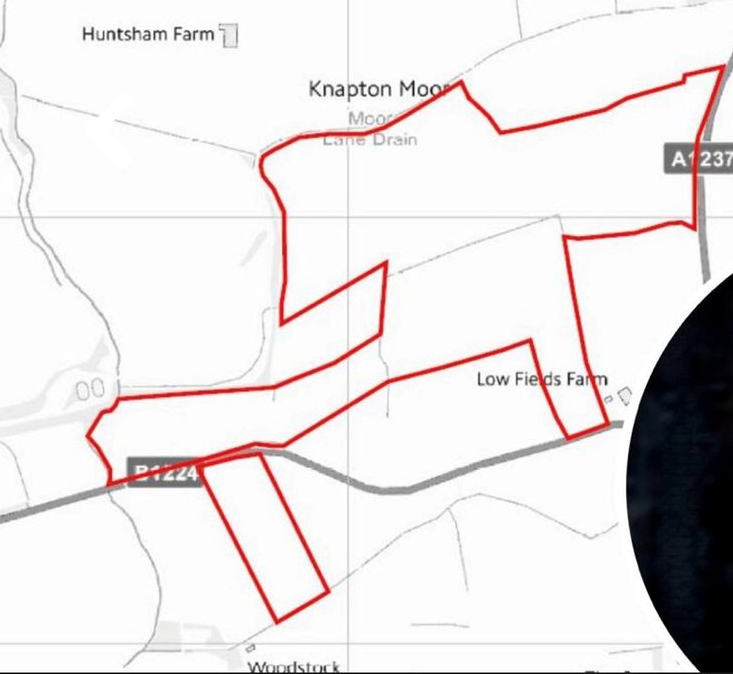
The major issue remains the lack of an environmental impact assessment. The land currently contributes to the local food supply chain. If the land is lost to food production, imports may increase resulting in longer transport chains and – critically – higher carbon emission levels. Storing carbon – like burying nuclear waste – simply pushes a problem onto the next generation.
The key to improving the environment is to reduce carbon emissions. Even the government seemed to recognise this, with its initiative yesterday aimed at replacing gas boilers with heat pumps and other benign energy sources.
Eco centre
The Eco centre is the small business facility at Clifton Moor which was promoted by the Council some 15 years ago. It was provided via a “design and build” contract on Council owned land.
Occupation levels have been encouraging although usually reflecting the general state of the economy. There are 63 individual units there. The Council currently leases back the centre and has managed the facility since 2015. The rent paid by tenant contributions is claimed to offset the current running costs.
Now officials are recommending that the Council spends £3.9 million buying out the interests of the owner of the building. The Council is not revealing how its business case figures stack up, but it claims that it may generate additional income by fitting PV (solar) panels on the roof.
Judged against the current economic volatility this looks like a high-risk strategy.
The plans for the non-listed section of the Guildhall have been an economic “basket case” for several years. The opportunity to sell part of the building for residential, retail or hotel use represented the least risk option and should have been pursued in 2012 when the building first became empty.
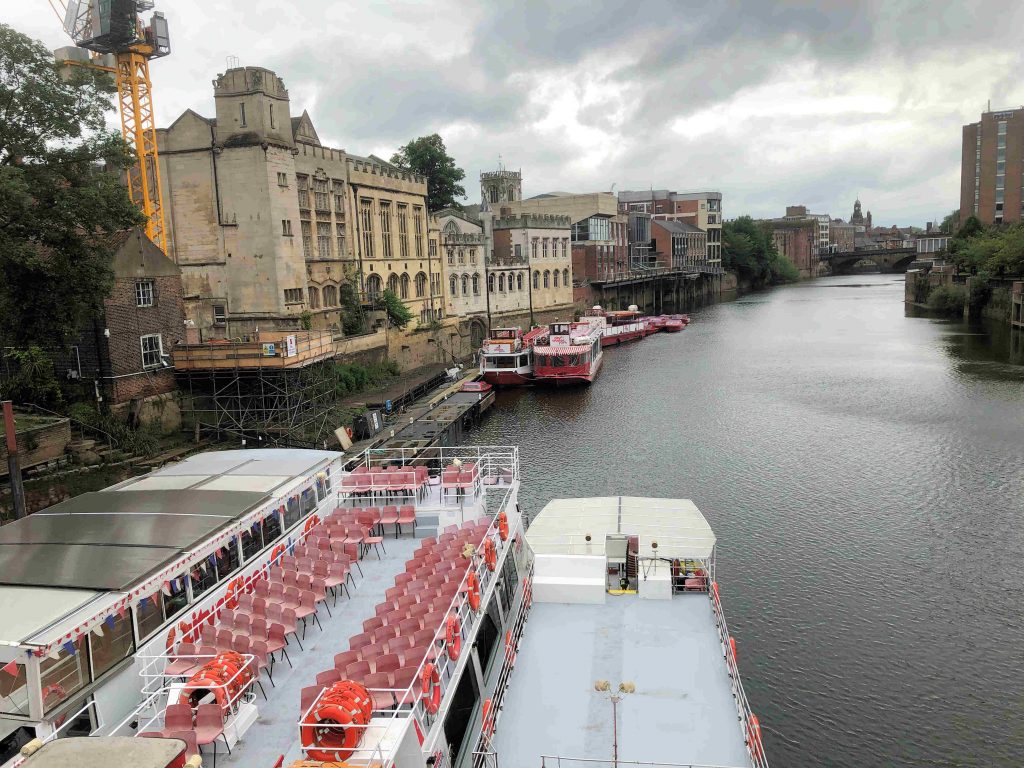
Instead, against a background of neglect and rapidly increasing repair costs, the Council opted for a risky plan to establish a hi tech small business start-up centre. The overall viability of the plan depended on letting part of the space as a high-end restaurant. The Council said it would run the unit itself.
£20 million of taxpayers money is at risk.
Now York University, via its Science City offshoot, has apparently offered to lease the business centre space at the Guildhall. Some civic and community use would continue. Science City has a generally good reputation and the offer to get the Council off its, self-inflicted, hook would seem to be an attractive one.
It is unclear how the success of the new enterprise would be judged. It is even less clear how the demand for City centre “incubator” space will mature in the wake of the pandemic.
The restaurant shell building will remain empty awaiting a resurgence of the local visitor economy.
The Council currently has a 9.2% minority stake in York Science Park Ltd. which it would sell.
The lease deal would be “off market” raising once again accusations of a “family and friends” approach to commercial dealings.
“Town and Gown” relations are already stressed in the wake of the pandemic and a perceived lack of accessibility for residents and visitors to the historic Kings Manor buildings in the City centre, which are currently occupied by the University.
The Council has pointedly not published updated business case figures which reflect the new offer being made as well as ongoing concerns about the cost of the renovation project..
Risk Management
On what must be one of the most risky approaches to the financial management of Council owned property, the Risk Management assessment included in the report amounts to only 7 lines of text and concentrates entirely on the planned bid for the Eco centre.